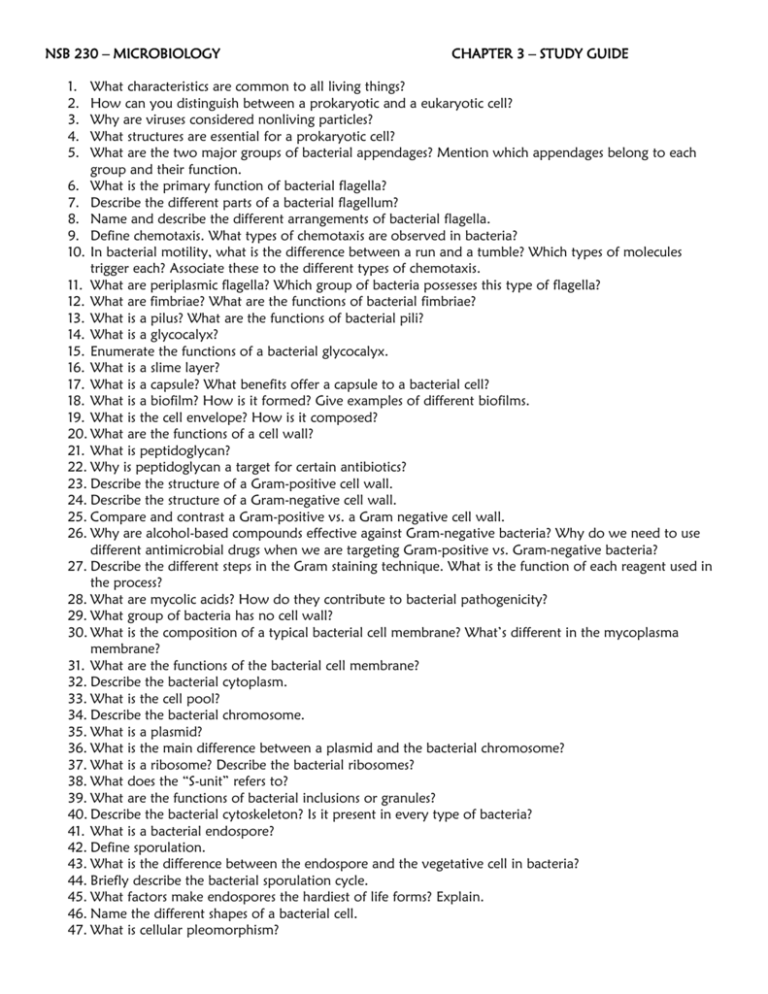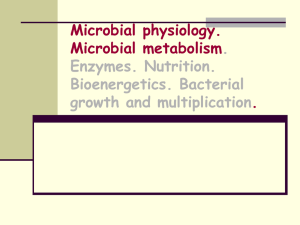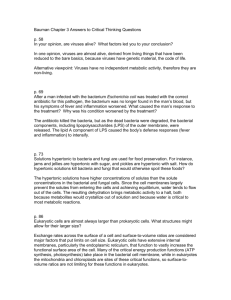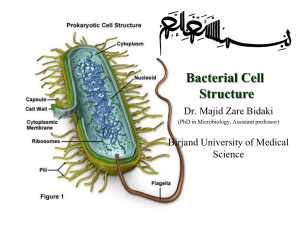Study guide - chapter 04
advertisement

NSB 230 – MICROBIOLOGY 1. 2. 3. 4. 5. CHAPTER 3 – STUDY GUIDE What characteristics are common to all living things? How can you distinguish between a prokaryotic and a eukaryotic cell? Why are viruses considered nonliving particles? What structures are essential for a prokaryotic cell? What are the two major groups of bacterial appendages? Mention which appendages belong to each group and their function. 6. What is the primary function of bacterial flagella? 7. Describe the different parts of a bacterial flagellum? 8. Name and describe the different arrangements of bacterial flagella. 9. Define chemotaxis. What types of chemotaxis are observed in bacteria? 10. In bacterial motility, what is the difference between a run and a tumble? Which types of molecules trigger each? Associate these to the different types of chemotaxis. 11. What are periplasmic flagella? Which group of bacteria possesses this type of flagella? 12. What are fimbriae? What are the functions of bacterial fimbriae? 13. What is a pilus? What are the functions of bacterial pili? 14. What is a glycocalyx? 15. Enumerate the functions of a bacterial glycocalyx. 16. What is a slime layer? 17. What is a capsule? What benefits offer a capsule to a bacterial cell? 18. What is a biofilm? How is it formed? Give examples of different biofilms. 19. What is the cell envelope? How is it composed? 20. What are the functions of a cell wall? 21. What is peptidoglycan? 22. Why is peptidoglycan a target for certain antibiotics? 23. Describe the structure of a Gram-positive cell wall. 24. Describe the structure of a Gram-negative cell wall. 25. Compare and contrast a Gram-positive vs. a Gram negative cell wall. 26. Why are alcohol-based compounds effective against Gram-negative bacteria? Why do we need to use different antimicrobial drugs when we are targeting Gram-positive vs. Gram-negative bacteria? 27. Describe the different steps in the Gram staining technique. What is the function of each reagent used in the process? 28. What are mycolic acids? How do they contribute to bacterial pathogenicity? 29. What group of bacteria has no cell wall? 30. What is the composition of a typical bacterial cell membrane? What’s different in the mycoplasma membrane? 31. What are the functions of the bacterial cell membrane? 32. Describe the bacterial cytoplasm. 33. What is the cell pool? 34. Describe the bacterial chromosome. 35. What is a plasmid? 36. What is the main difference between a plasmid and the bacterial chromosome? 37. What is a ribosome? Describe the bacterial ribosomes? 38. What does the “S-unit” refers to? 39. What are the functions of bacterial inclusions or granules? 40. Describe the bacterial cytoskeleton? Is it present in every type of bacteria? 41. What is a bacterial endospore? 42. Define sporulation. 43. What is the difference between the endospore and the vegetative cell in bacteria? 44. Briefly describe the bacterial sporulation cycle. 45. What factors make endospores the hardiest of life forms? Explain. 46. Name the different shapes of a bacterial cell. 47. What is cellular pleomorphism? 48. Enumerate the different cell arrangements observed in cocci and bacilli. 49. What is the average size of a prokaryotic cell? 50. What is the basis of the current tree of life? 51. Define a bacterial species. 52. What is the difference between a bacterial strain and a serotype? 53. Describe the main characteristics of: a. Cyanobacteria b. Green and purple sulfur bacteria c. Gliding and Fruiting bacteria d. Rickettsias e. Chlamydias 54. What are the main differences between the bacterial and the archaeal cell?









